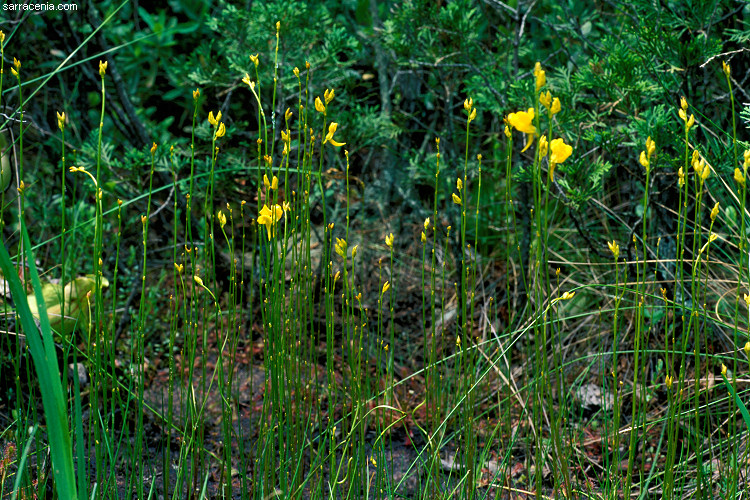
Christian living:
The lake on Dave's
maps turned out to be in the center of
an extremely developed
campground for christians. Unfortunately, with all the landscaping and
habitat transformation,
it looked unpromising for carnivorous plants. Prominent signs
had slogans like
"Clean camping & Christian living". I noted that Dave
did not turn down the volume of his blaring death-goth
music, which I think was screaming something about how "God hates
us all!" Ah, youth.
Anyway, we parked the car and headed towards a part of the lakeshore that
looked the most undeveloped. A quaint little bridge led to an island, and
in the muckier parts we found a wealth of carnivores.
Look! Utricularia! This plant made me scratch my head for a few
minutes. Dave can attest that I waffled before deciding upon
its identification.
Obviously, it is either U. cornuta or U. juncea--but
which? I settled on U. cornuta because of the flower size, which matched
both Taylor's description and Kondo's chart, and the early flowering
season (U. juncea doesn't flower for several months). Even so,
the flowers were a bit scattered along the stem more than I would have
liked, but sometimes the plants just don't behave properly.
I like how this photograph shows an aspect that I feel is so typical of the
Pine Barrens: see one carnivore, see many. Less obscurely expressed--an
area suitable for one species usually has just about them all,
practically sitting on one another. On this
little island we found U. subulata, U. cornuta, S. purpurea,
D. intermedia, D. rotundifolia, and D. filiformis.
Do you see the S. purpurea and D. intermedia lurking in
the background? You can't tell, but there is D. rotundifolia
mixed in there too. The U. subulata and D. filiformis
are right behind you.